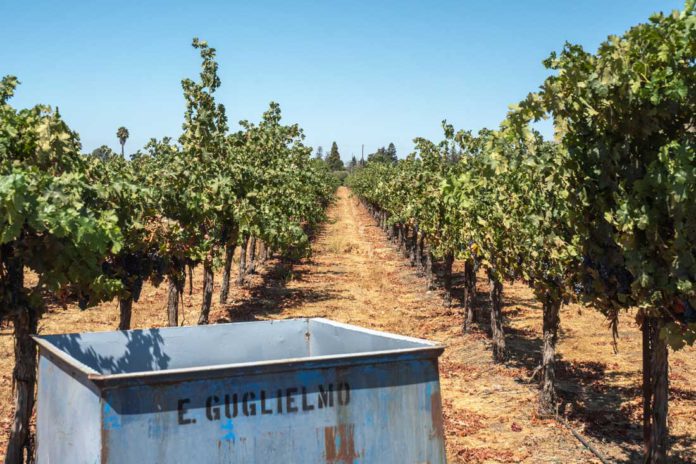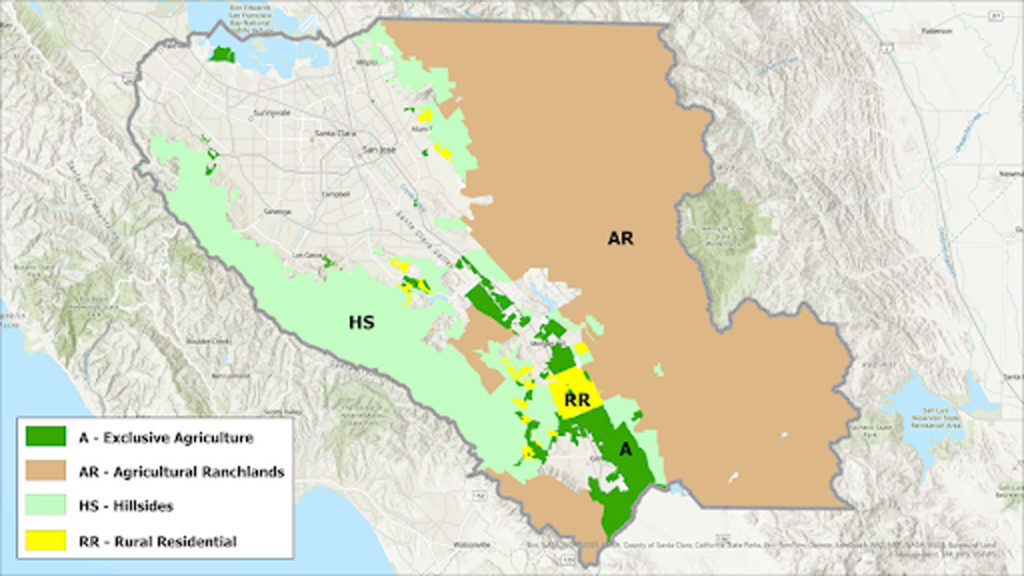
Santa Clara County is considering sweeping changes to its rural zoning ordinances that would impose new building limits and require mitigation when farmland is converted to non-agricultural uses.
If approved by county supervisors, the new rules could significantly affect wineries and other agricultural operations that conduct a variety of on-site business.
The proposed Rural Zoning Amendments, presented to the Planning Commission Aug. 28, would establish a maximum building coverage parameter for non-ag uses across all four rural zoning districts in Santa Clara County. The exact value of the parameter is still a matter of discussion, but staff are considering possible values ranging from 7,500 to 12,500 square feet.

The changes would also require property owners to preserve farmland elsewhere when converting five or more acres of important local farmland to other uses through mitigation strategies such as the creation of a conservation easement, an in-lieu fee or other equivalent. A specific mitigation plan will be developed in Phase Two of the project.
“We’re trying to facilitate the development of new agricultural uses and clarify where non-agriculture projects can be built in the rural areas, and at what scale,” Charu Ahluwalia, senior planner for Santa Clara County, said in her presentation to the Planning Commission. “This is to benefit applicants as well as the surrounding community by setting clear expectations for development in the rural areas.”
The amendments stem in part from recent California Environmental Quality Act court cases that brought attention to farmland being converted to non-agricultural development. Previously, projects such as construction of an estate home on an existing farmland parcel could be exempt from environmental review, resulting in unmitigated losses of viable farmland.
The county aims to replace subjective “local-serving” provisions with objective development standards, including the cumulative building site coverage limits that would apply to all non-agricultural uses in rural zones.
“The purpose of ‘local-serving’ provisions, which are a part of our general plan and zoning ordinance, is to make the size, scale and intensity of development compatible with the rural setting,” Ahluwalia said. “However, the subjectivity related to these provisions has led to varying interpretations and criticism that the county has not been applying them equitably.”
No more ‘winery’ zoning?
The four zones affected by the ordinance amendments are Agricultural Ranchlands, Hillsides, Rural Residential and Exclusive Agriculture. The proposed amendments would also simplify the number of agricultural use classifications down to two, with all ag-supportive uses falling under either “Ag Processing” or “Ag Sales and Events.” This removes the “Winery” use classification entirely, replacing its operations with individual use classifications.
“Currently, wineries contain several ag-related activities,” Ahluwalia explained. “For instance, a project could be producing grapes, could have a tasting room, onsite wine sales, ag processing, tours and events. Staff is proposing to parse out these as independent uses.
“Specifically, pulling out the sales and events component as a stand-alone use would extend activities that currently are permitted as ancillary to wineries to other types of agriculture operation.”
In Exclusive Agriculture zoning districts, only agricultural uses and activities that “clearly enhance long-term agricultural viability” would be permitted. Non-agricultural uses currently allowed in those areas would be restricted. It is not clear whether non-agricultural uses currently operating in the affected zones would be grandfathered in.
Local winery operators expressed significant concerns about the proposed changes and perceived lack of transparency during the public feedback period. Kim Engelhardt, president of Wineries of Santa Clara Valley, said the industry attracts more than 500,000 visitors annually and employs nearly 600 residents.
“We’re concerned about the lack of transparency of the proposed zoning ordinance amendments and how they may impact our winery businesses,” Engelhardt said. “If we’re required to pay tens of thousands of dollars in new permits, there are many wineries that would be forced to close.”
Paul and Vicki Kermoyan, who own a small winery where they live on-site and produce about 400 gallons of wine annually, submitted extensive written comments to the commission in which they warn that the new rules could force businesses to close if they require existing wineries to make extensive retrofits.
“Most wineries will not be able to financially provide such improvements,” they wrote. “If the project’s goal is to reduce the number of wineries in Santa Clara Valley, the proposal will succeed.”
Stacy Giannini, executive director of the Wineries of Santa Clara Valley Association, questioned whether existing wineries would be grandfathered under current zoning or face costly compliance requirements, and urged commissioners and county staff to conduct public outreach to settle burning questions in the winery community.
“Has the county assessed the economic consequences of new rules for small family wineries?” she asked commissioners.
Religious organizations have also objected to the proposed changes. More than 500 comments submitted by supporters of the Hindu American Foundation urged commissioners to consider the impacts to religious organizations operating on agricultural land in Santa Clara County.
“Currently, religious non-profits have the most applications pending with the planning commission to expand their developed spaces,” they wrote. “If the land surrounding these facilities are limited by the proposed zoning amendments, religious organizations and faith-based community centers will be unable to expand their community-oriented services, including food relief, youth programs, cultural education, senior support and spaces for prayer, reflection and community service.”
Planning Commissioner Marc Rauser also raised concerns about potential impacts on property rights, particularly for owners of exclusively agricultural land who might lose development options that are currently permitted.
“If I owned [property on] Exclusive Agriculture, I would feel this is a taking,” he warned. “There are so many things that on my property I can currently do now, it sounds like a lot of those options are going to be taken away.”
The 45-day public comment period for the draft environmental impact report ended Sept. 4. The draft zoning ordinance will then be released for public review in early September, followed by public outreach meetings through October with further opportunities for public feedback.
The amendments are expected to reach the Board of Supervisors for approval by December 2025.
Calvin Nuttall is a Morgan Hill-based freelance reporter.














